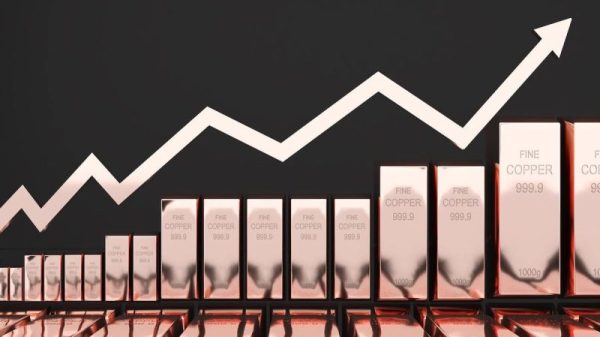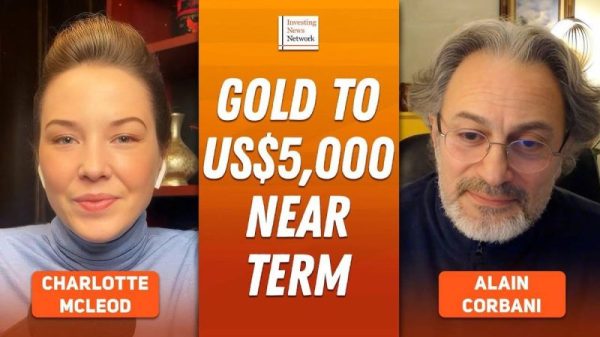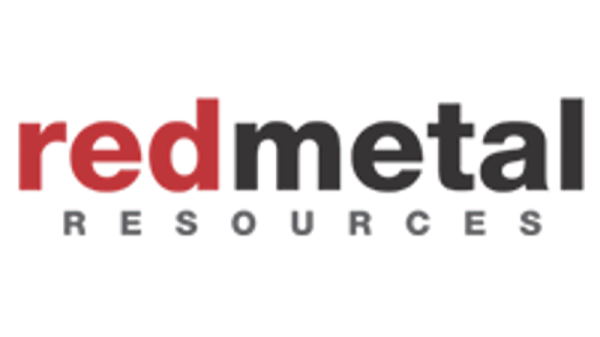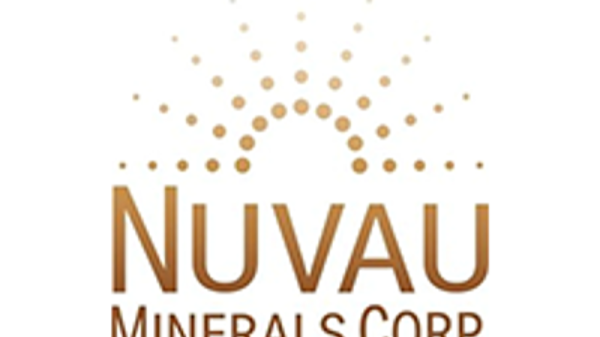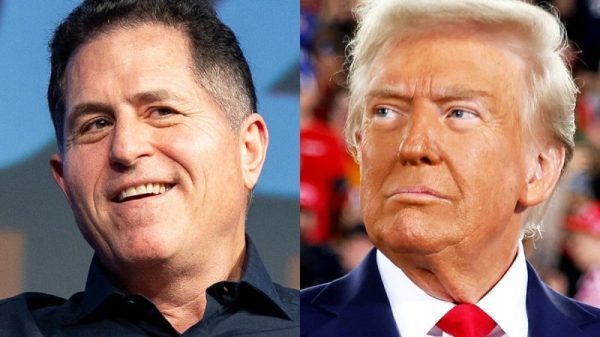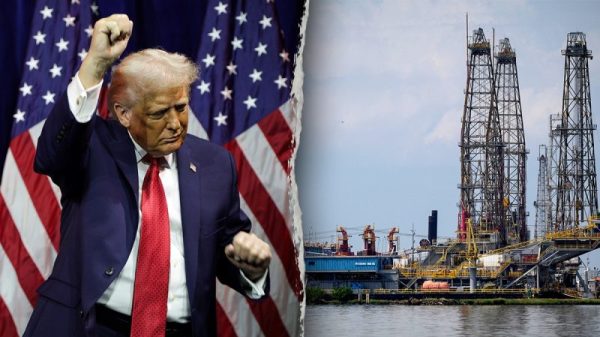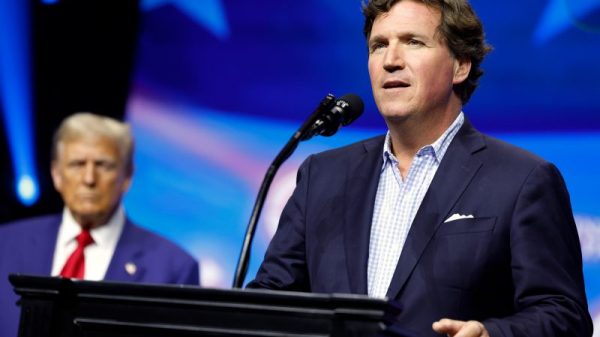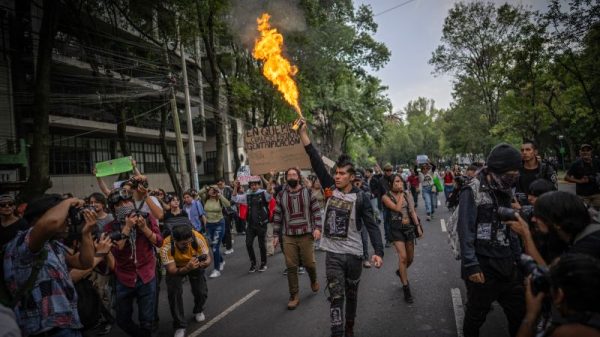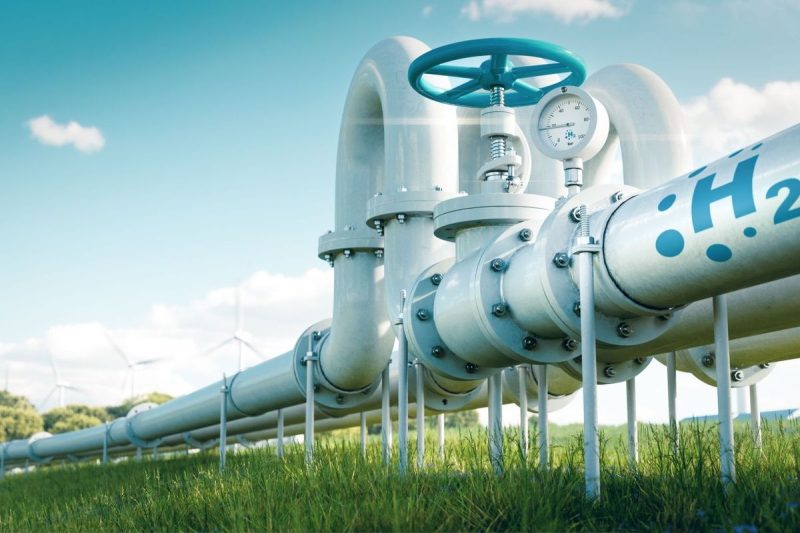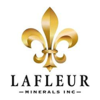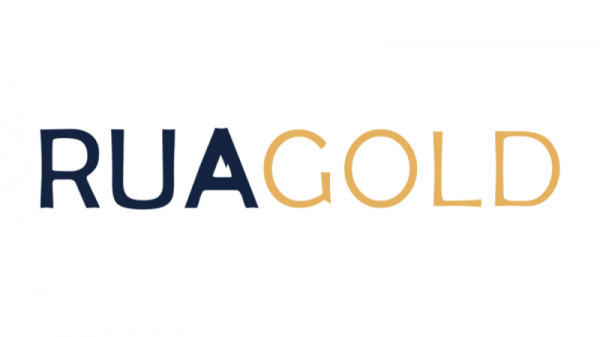Hydrogen stocks are benefiting from cleantech sector momentum as the world moves closer to a green energy future.
The most abundant element on Earth, hydrogen is a colorless gas. It can be produced in liquid form and burned to generate electricity, or combined with oxygen atoms in fuel cells. In this way, hydrogen — which produces no carbon emissions — can replace fossil fuels in household heating, transportation and industrial processes such as steel manufacturing.
Rising demand for carbon-free energy sources alongside significant new government policies are driving growth in the hydrogen market. Grand View Research projects that the global hydrogen-generation market will grow at a compound annual growth rate of 9.3 percent from 2024 to 2030, reaching US$317.39 billion by the end of the forecast period.
It’s worth noting that the downside to hydrogen as a clean energy source is that 99 percent of the hydrogen fuel currently in production is derived from power generated by coal or gas. To combat this problem, some companies are pursuing green hydrogen, which is produced by splitting hydrogen atoms from oxygen using electrolyzers powered by renewable energy.
US hydrogen stocks
The US hydrogen market is well established, accounting for “more than half the world’s fuel cell vehicles, 25,000 fuel cell material handling vehicles, more than 8,000 small scale fuel systems in 40 states, and more than 550 MW of large-scale fuel cell power installed or planned,” according to the Fuel Cell and Hydrogen Energy Association.
Looking at the medium to long term, the use of hydrogen as a fuel source is expected to grow on further investments and strong government incentives. US President Joe Biden signed the Inflation Reduction Act into law in mid-2022, and it includes policies and incentives for hydrogen, such as a production tax credit aimed at further boosting the US market for clean hydrogen.
In October 2023, the Biden administration stated that US$7 billion in funding under the Bipartisan Infrastructure Law will be awarded across seven regional clean hydrogen hubs ‘to accelerate the domestic market for low-cost, clean hydrogen.’ More recently, in January the administration announced US$623 million in grants for building hydrogen refueling infrastructure in a corridor spanning from California to Texas.
1. Linde (NYSE:LIN)
Market cap: US$207.64 billion; share price: US$431.95
Leading global industrial gases and engineering company Linde has been producing hydrogen for more than a century and is a pioneer in new hydrogen production technologies. Linde’s operations cover each step of the hydrogen value chain, from production and processing through distribution and storage. The company also uses its gases for industrial and consumer applications.
Globally, the company has more than 500 hydrogen production plants. Through its ITM Linde Electrolysis joint venture, Linde has become one of the world’s leading suppliers of green hydrogen produced using proton exchange membrane (PEM) electrolyzer technologies. This also makes it one of the few green hydrogen stocks.
2. Air Products & Chemicals (NYSE:APD)
Market cap: US$62.737 billion; share price: US$282.61
Founded in 1940, Air Products & Chemicals sells industrial gases and chemicals and provides related equipment and expertise to a wide range of industries, including the refining, chemical, metals, electronics, manufacturing, and food and beverage segments.
In addition to producing oxygen, nitrogen, argon and helium, the company operates more than 100 hydrogen plants and maintains the world’s largest hydrogen distribution network. Air Products has an extensive hydrogen-dispensing technology patent portfolio and has been involved in more than 250 hydrogen-fueling projects worldwide.
Air Products also has a joint venture project now under construction with ACWA Power (SR:2082) and NEOM Company in Saudi Arabia. Called the NEOM Green Hydrogen Complex, the operation will be powered by 4 gigawatts of renewable power from solar and wind to produce 600 metric tons per day of carbon-free hydrogen, which it says will be delivered in the form of green ammonia. Once production begins at the complex in 2026, Air Products will be the sole offtaker and plans to deliver the green ammonia to Europe’s transport sector.
3. Cummins (NYSE:CMI)
Market cap: US$37.15 billion; share price: US$271.61
Indianapolis-based Cummins designs, manufactures and distributes engines, filtration and power-generation products with a specialization in diesel and alternative fuel engines and generators.
In March 2023, the company announced the launch of a new brand, Accelera, which features “a diverse portfolio of zero-emissions solutions, includ(ing) battery systems, fuel cells, ePowertrain systems and electrolyzers.” The brand encompasses Cummins’ established battery electric and hydrogen fuel cell systems, as well as electrolyzers for hydrogen refueling stations. Shortly after, Accelera started electrolyzer production in Minnesota, US. The facility is Cummins’ first electrolyzer production site in the country.
The hydrogen fuel cell company showcased its next generation B6.7H hydrogen engine at the April 2024 Intermat Sustainable Construction Solutions and Technology Exhibition in Paris.
Canadian hydrogen stocks
Like its neighbor to the south, Canada is a world leader in hydrogen and fuel cell technologies, especially when it comes to innovation, research and development. In terms of the global hydrogen market, the country reportedly generates C$200 million in hydrogen technology exports according to data from January 2023.
The federal government is heavily invested in the sector both in terms of funding and the implementation of clean energy policies. “Development of an at-scale, clean hydrogen economy is a strategic priority for Canada, needed to diversify our future energy mix, generate economic benefits and achieve net-zero greenhouse gas emissions by 2050,’ Natural Resources Canada states. Invest Canada projects that the domestic market for hydrogen and related products will reach a value of C$50 billion by 2050.
In British Columbia, the Government of Canada has recently invested C$9.4 billion to launch a new Clean Hydrogen Hub that will use electrolyzer technology and hydroelectricity to generate hydrogen that can be sold to industry users.
1. Ballard Power Systems (TSX:BLDP)
Market cap: C$1.15 billion; share price: C$3.77
Ballard Power Systems is a global leader in hydrogen fuel cell technology and is working to accelerate the adoption of this technology. The company develops and manufactures PEM fuel cell products that create electrical energy from the combination of hydrogen and air. Ballard’s products are designed for heavy-duty trucks, buses, trains and marine applications, as well as backup power storage.
Two of Ballard’s 200 kilowatt fuel cell modules are located on the world’s first hydrogen-powered ferry, operated by Norwegian company Norled. The company is also supplying hydrogen fuel cell modules to global carbon-reduction company First Mode; they will be used to power several hybrid hydrogen and battery ultra-class mining haul trucks.
In 2024, Ballard is planning to deliver a minimum of 100 of its FCmove-HD+ modules to NFI Group to be used in the latter’s New Flyer next generation Xcelsior CHARGE FC hydrogen fuel cell buses, which will be deployed across the US and Canada. The company also announced in April that it had secured its largest order ever — 1,000 hydrogen fuel cell engines to be supplied to European bus manufacturer Solaris.
2. Westport Fuel Systems (TSX:WPRT)
Market cap: C$145.62 billion; share price: C$8.37
Headquartered in Vancouver, British Columbia, Westport Fuel Systems supplies advanced alternative fuel delivery components and systems to the transportation industry worldwide. This includes its high pressure direct injection (HPDI) fuel system for commercial vehicles. The system can run on biogas, natural gas, hydrogen, and other alternative fuel products. The company has operations in partnership with leading global transportation brands across more than 70 countries in Europe, Asia, North America, and South America.
One of those partners is Swedish automaker Volvo Group. The two firms are working together to commercialize Westport’s HPDI fuel system technology for long-haul and off-road applications that will use renewable fuels now and hydrogen in the future.
Westport is also working with a leading global provider of locomotives and related equipment for the freight and transit rail industries on a two-year proof of concept project to adapt its hydrogen HPDI fuel system for use with the locomotive original equipment manufacturer’s (OEM) engine design. The project is fully funded by the OEM.
3. First Hydrogen (TSXV:FHYD)
Market cap: C$61.95 million; share price: C$0.91
First Hydrogen designs and builds zero-emission vehicles, and its First Hydrogen Energy division is focused on the production and distribution of green hydrogen. The company has also secured locations in the UK and Canada for developing green hydrogen production projects.
First Hydrogen has a hydrogen collaboration agreement with Cambridge University focused on the development of hydrogen technologies. Through agreements with AVL Powertrain UK and Ballard, the company has developed a light commercial vehicle powered by hydrogen fuel cell technology; it is expected to have a range of more than 500 kilometers.
First Hydrogen is aggressively working to showcase the commercial viability of its hydrogen fuel cell powered vehicles (FCEVs). In May, the company said it has completed three successful vehicle trials to date and recently started trials in London, UK with a large multinational logistics company dealing in parcel deliveries. ‘Recently completed trials with Wales & West Utilities (WWU), show the first-of-its-kind vehicle has been operating for between 6 and 7 hours per day. The new trials will test the FCEV over 8 hours per day with multiple deliveries per hour,’ stated the news release.
Australian hydrogen stocks
Australia is another important hotspot for investing in hydrogen. The Australian Renewable Energy Agency forecasts that the country’s hydrogen market could be worth up to AU$10 billion annually by 2040.
The Australian government’s National Hydrogen Strategy, which it updated in 2023, highlights its intention to position the country as a “major player” in the global hydrogen market by 2030. To this end, Australia has partnered with a number of other nations on hydrogen technology.
Australia and Germany are working together on a hydrogen technology development program that will help Australia build out its capacity to export hydrogen to Germany as it seeks to reduce its reliance on fossil fuels. Through a partnership with Japan, Australia is developing new hydrogen fuel cell technology and looking to establish the world’s first clean liquefied hydrogen export pilot project.
The Australian Government is also investing more than AU$500 million in the development of regional hydrogen hubs across the country.
1. Elixir Energy (ASX:EXR)
Market cap: AU$113.4 million; share price: AU$0.105
Energy exploration and development company Elixir Energy’s projects encompass both natural gas and renewables, including a green hydrogen project in Mongolia. The Gobi H2 green hydrogen and solar project is a joint venture with renewable energy firm SB Energy.
The project’s close proximity to China would allow for delivery via pipeline rather than the sea, lowering costs. The company is planning to advance the Gobi H2 project based on the results of a prefeasibility study. According to its December quarterly report, Elixir is now engaging with potential hydrogen customers in Mongolia and China.
2. Hazer Group (ASX:HZR)
Market cap: AU$108.15 million; share price: AU$0.455
Technology development company Hazer Group is working to commercialize the HAZER Process, a low-emission hydrogen and graphite production process initially developed at the University of Western Australia. It uses iron ore as a process catalyst to convert natural gas and similar feedstocks into hydrogen for use as an industrial chemical and in fuel cells, as well as into high-quality synthetic graphite for use in lithium-ion batteries.
Hazer kicked off the year with the start-up of its commercial demonstration plant; it is now producing hydrogen and graphitic carbon. “This is a landmark achievement for Hazer, as we realise the successful start-up of our CDP and the production of low-cost, low-emissions hydrogen and graphitic carbon utilising our world-first pyrolysis technology,’ Hazer’s CEO Glenn Corrie said.
In May, the company inked an agreement with Canadian utility FortisBC for the development of a hydrogen production facility in British Columbia which will use Hazer’s proprietary technology. The proposed commercial production facility will have a design capacity of up to 2,500 tpa of clean hydrogen and approximately 9,500 tpa of Hazer graphite.
Hazer soon followed that up by signing an MOU with South Korea’s POSCO Steel in June. Under the proposed agreement, POSCO would integrate Hazer’s hydrogen and graphite production technology into its steel manufacturing process.
3. Pure Hydrogen (ASX:PH2)
Market cap: AU$75.28 million; share price: AU$0.195
Pure Hydrogen is focused on becoming a leading producer and supplier of hydrogen and hydrogen-fuel-cell-powered vehicles such as buses and waste collection vehicles. The company has several partnerships with companies for its technology. Pure Hydrogen’s hydrogen-fuel-cell-powered Prime Mover truck was displayed at the Brisbane Truck Show last year.
Pure Hydrogen has a 40 percent stake in the Turquoise Group, an Australian clean energy company, as well as exclusive long-term acquisition rights for the company’s future hydrogen production. Turquoise Group announced in May 2024 that it had produced the first graphene powder and hydrogen during testing at its commercial demonstration plant in Brisbane, Queensland.
FAQS for hydrogen investing
Which is better: EVs or hydrogen?
According to research from TWI Global, there are pros and cons to both electric vehicles (EVs) and hydrogen vehicles. In terms of range and charging time, hydrogen beats electric hands down. However, while a hydrogen-powered vehicle doesn’t need much time to refuel compared to an EV, there is still much more EV charging infrastructure currently available compared to hydrogen fueling stations. EVs are also cheaper to purchase than hydrogen vehicles. As far as safety and emissions are concerned, it’s a draw between the two.
Why does Elon Musk not like hydrogen?
Elon Musk’s SpaceX has used hydrogen to fuel its rockets, and Musk has more recently talked about hydrogen playing an important role in industrial applications, such as steelmaking. However, he has balked at the idea of hydrogen fueling vehicles, calling fuel cells “fool cells.” Speaking at a Financial Times conference in May 2022, Musk said, “It’s important to understand that if you want a means of energy storage, hydrogen is a bad choice.”
Why is Toyota investing in hydrogen?
Toyota (NYSE:TM,TSE:7203) first invested in hydrogen fuel cell technology in 1992 as its executives saw clean energy as the future of transport. However, with EVs dominating the clean car space, the automaker began to shift its focus to compete with its peers. Toyota brought its newest hydrogen-powered vehicle to market in the fall of 2023 — a revamped Crown sedan that also has a hybrid-electric version. For 2024, the auto maker is introducing the first prototype of its Toyota Hilux trucks with a hydrogen fuel cell powertrain.
Who is the leader in hydrogen energy?
Today, the US leads the world in hydrogen production, followed by Germany and Canada. By 2030, Australia is expected to be the leader in hydrogen energy, followed by the US and Spain.
Securities Disclosure: I, Melissa Pistilli, hold no direct investment interest in any company mentioned in this article.

